Those Carpenter Bees Are Building Your Ecosystem
Please consider their benefits before embarking upon a killing spree.
Like so many native animals thought of as pests, carpenter bees are sometimes misunderstood.
There are hundreds of species of carpenter bees, which is the common name for bees that burrow into wood or bamboo to build their nests. When most of us think of carpenter bees, however, we’re thinking of Xylocopa virginica, which is native to eastern North America.
About the size of a large bumblebee, carpenter bees are distinguished by their smooth, shiny abdomens versus the fuzzy ones of bumblebees. While their substantial size and swooping behavior can be startling, males who defend the nest do not have the ability to sting, and females only sting if handled (which might include sticking a finger into the nest hole—don’t do that). As solitary bees, they do not swarm or form hives.
There is no question that carpenter bees can damage wood on human-built structures, but their nests are often not extensive enough to do so. The entrance holes go into the wood an inch or two deep, then turn at a ninety-degree angle and follow the wood grain. Although nests have been recorded as great as ten feet long, they usually run no more than a few feet and are no wider than the visible entrance diameter. Notably, these insects do not feed on the wood.
Carpenter bees are said to avoid treated or painted wood or wood freshly stained with almond oil for their nests, but at Puddock Hill they have bored into the color-stained wood of both our barn and our garden shed.
About ten years ago, we renovated the old bank barn, which Quakers built in 1816. The next year, we found that carpenter bees were drilling nests in the window sills, so we brought in an exterminator, which I now regret.
Like all native species, carpenter bees play a role in our ecosystem, mostly as generalist pollinators. They pollinate Maypop (Passiflora incarnata), a southern native passion flower, salvia species, Fabaceae species (legumes), and milkweed, as well as many open-faced or shallow flowers. They do also engage in a practice called nectar robbing whereby they drill holes in the corolla of flowers, subverting pollination, but a 2004 study of ten commercial blueberry farms found “no appreciable effect on fruit set,” so I doubt there’s anything in this behavior to concern the backyard gardener.
They also pollinate food crops such as eggplant, tomato, blueberry, bean, pea, and apple. According to Penn State Extension, native bees, including carpenter bees, pollinate 15% of the state’s agricultural crops.
Carpenter bees feed woodpeckers, which is where real problem can come in for human structures, as woodpeckers sometimes undertake excavations to get at the larvae. Rather than introducing poison to the situation, one might try deterring the woodpeckers with wind chimes or ribbons.
There are plenty of resources on the internet that will tell you how to kill carpenter bees, but I’m not going there. A better strategy is to offer the bees alternative nesting sites. For example, farmers seeking more pollinators sometimes put out blocks of soft wood such as pine or cedar to encourage carpenter bee nests.
But the best way to create alternative habitat for carpenter bees is by pursuing backyard stewardship practices. Carpenter bees want dead wood, so give it to them by not chipping your brush piles and leaving dead trees standing in the woods. These practices have myriad other benefits for wildlife, as well.
At Puddock Hill, we’ve decided to live with our carpenter bees. So far (and I hope these don’t become famous last words) any damage they’ve done or invited has proved negligible. In fact, I don’t consider their few perfect holes damage at all. To me, they are a reminder that humans and the living things around us are all part of the fabric of nature.
Non-native dwarf orange (Geum coccineum) is one of the first bloomers in Pam’s raised bed garden this year:
This bird’s next came out of a tree and landed in the big pond:
Here it is on the ground after I fished it out:
Speaking of nests, in this stand of somewhat invasive flag iris (Iris pseudacorus)…
I found an active red-winged blackbird nest, which you have to look carefully to see:
How do you say “thanks” in Azalean? This old native azalea by the barn survived years of heavy deer browse (before we erected our fence) and overzealous pruning from a landscape contractor a few years ago to finally recover its natural habit, rewarding us with a spectacular show:



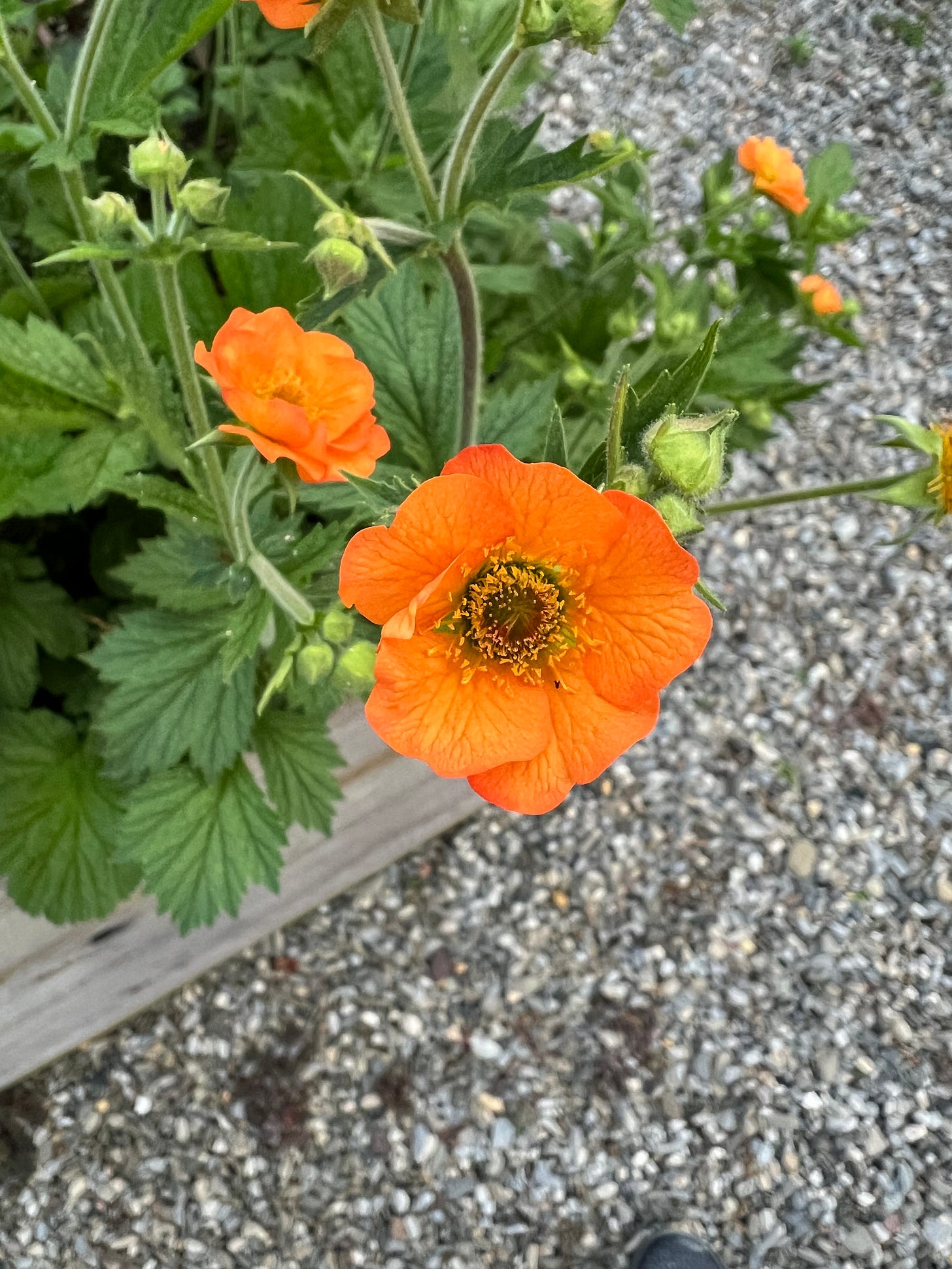
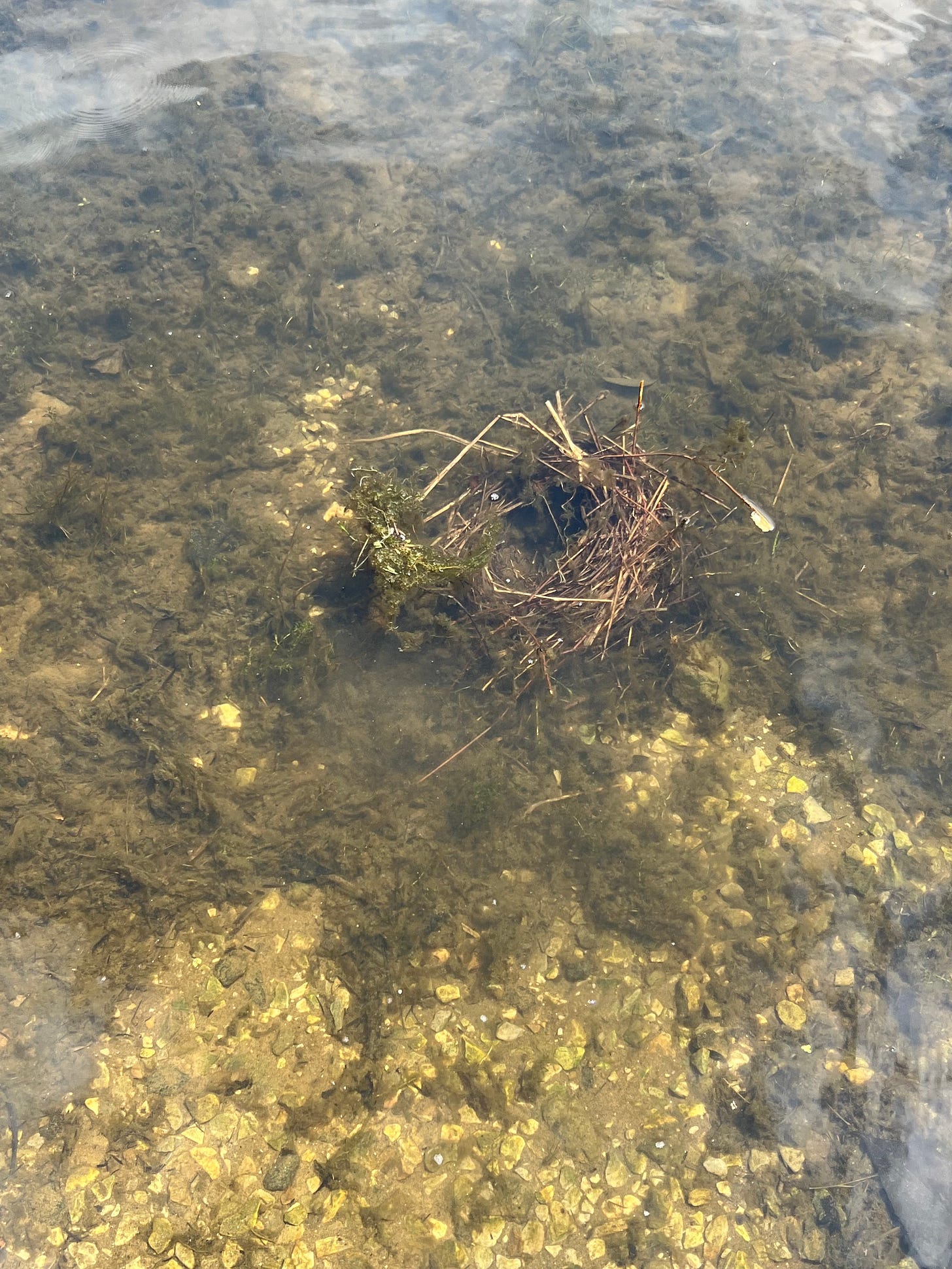
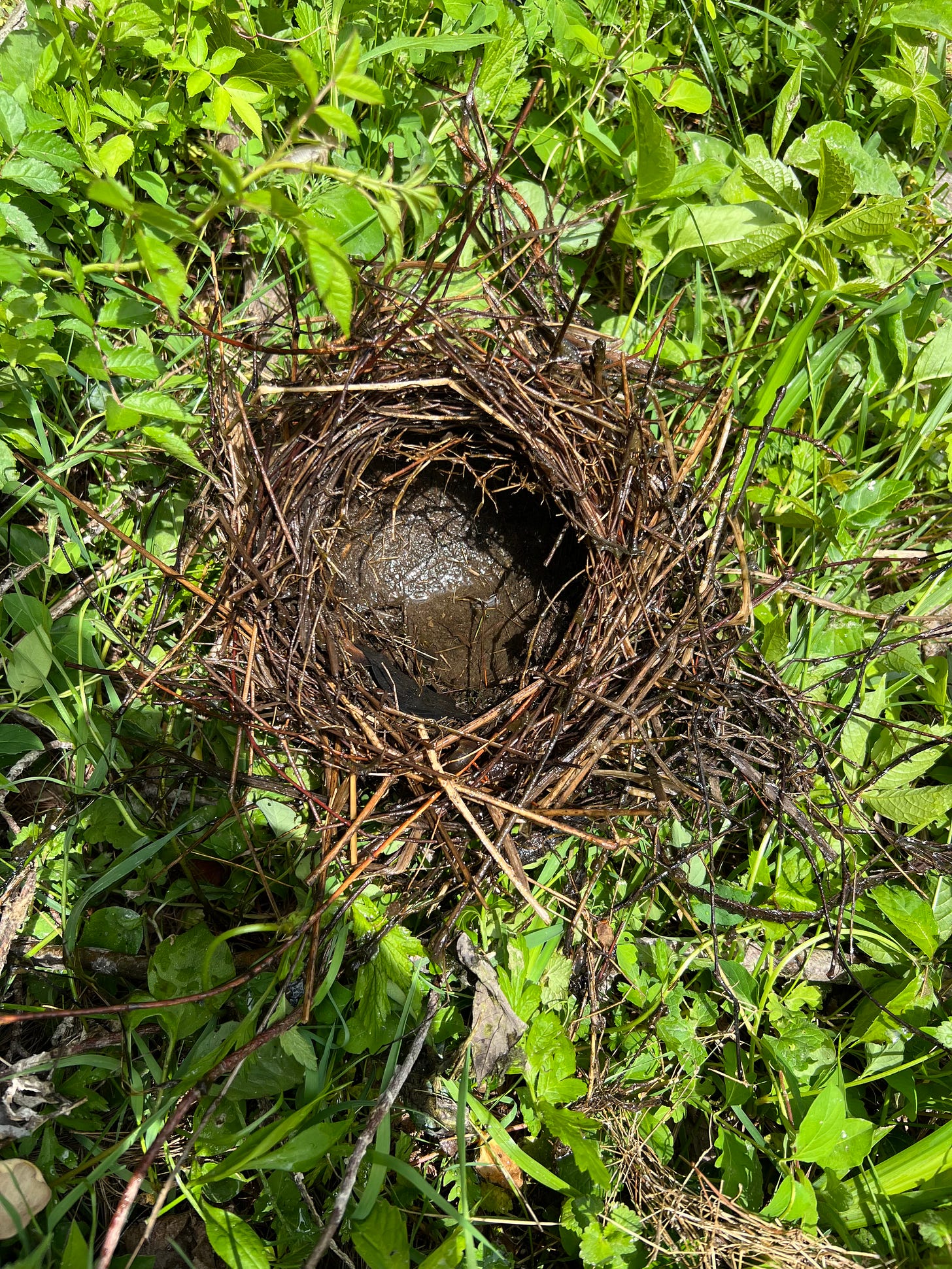
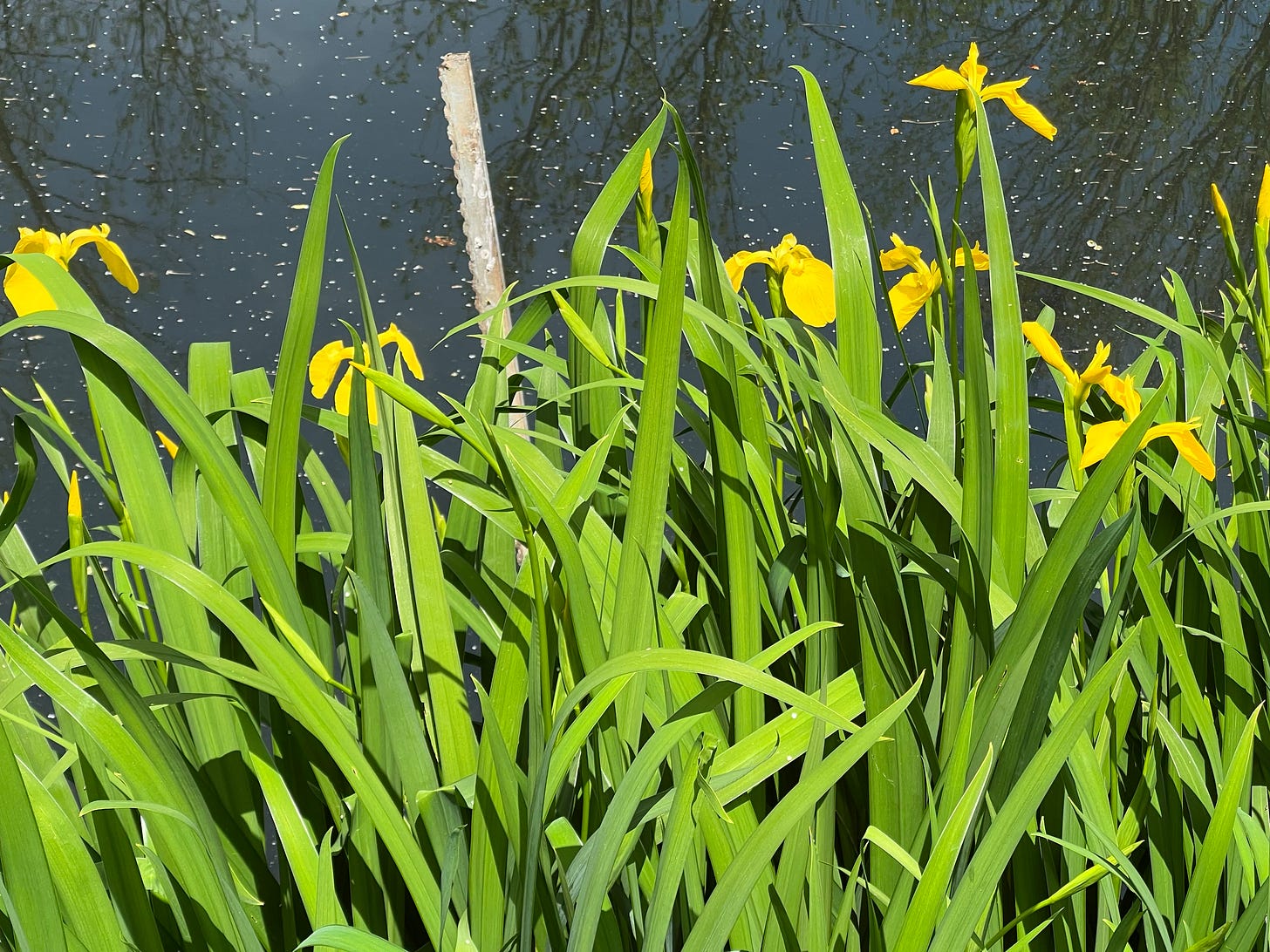
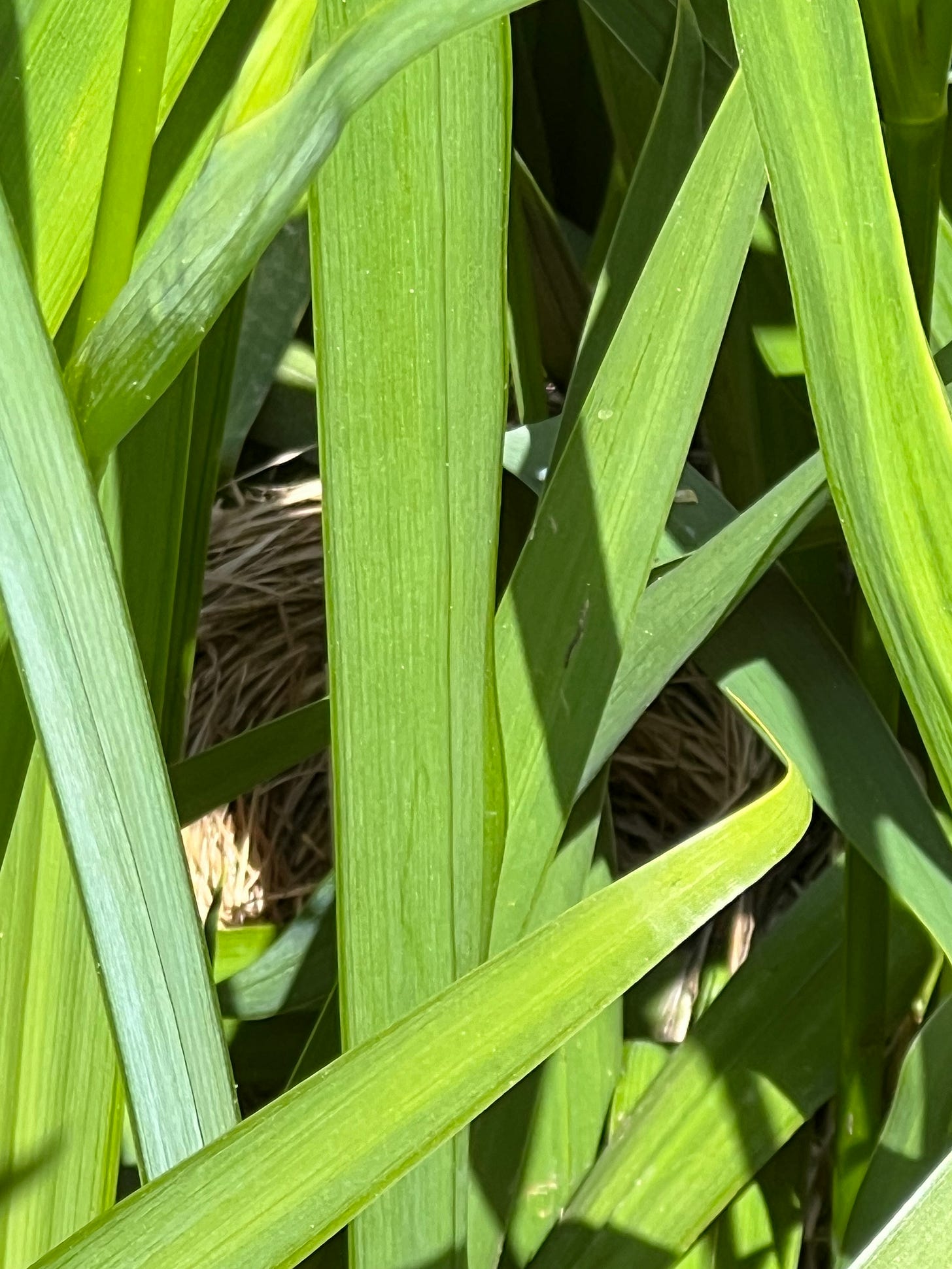

I used to kill bees, spiders, even centipedes until I learned a little something about them. Now I let them free to do their thing.
Thank you for this post. We have some every spring on our porch. The damage is minimal, so I’ve just let them
bee (😂). I’ve found that I enjoy watching them hover around so I’m happy to share space .